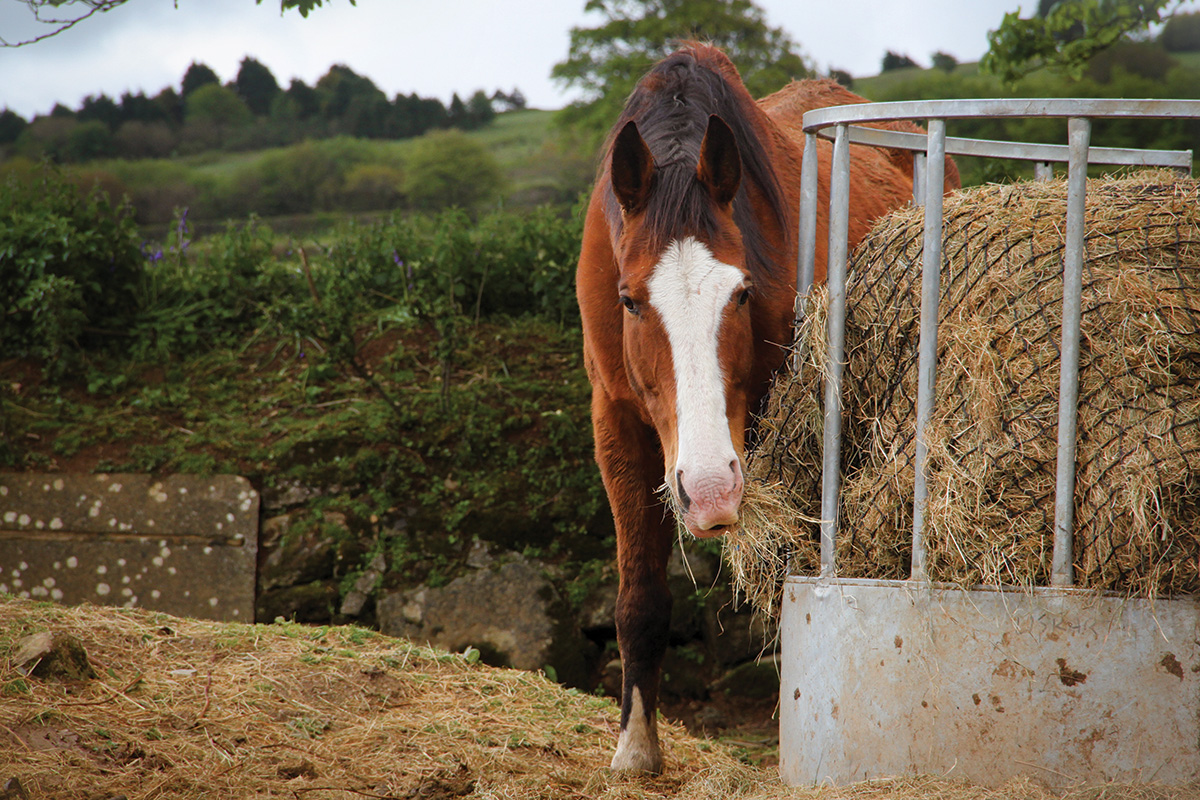
Keeping weight on a senior horse can be difficult any time of year, but with the challenges of cold weather right around the corner, dental issues requiring soaked feed can create twice the headache. However, with a little planning and these feeding and nutrition tips, your senior horse can sail through the winter months in good weight and glowing health.
Focus on Forage
Grass hay, cubes or pellets help maintain weight and keep your horse warm by raising his internal body temperature. This means he can use the calories to maintain (or add) weight, rather than burning calories to stay warm in cold weather.
Aim to feed at least 1.5 to 3 percent of your horse’s body weight per day in forage, or work with your veterinarian on the right amount for your senior horse.
Using a slow feeder or small-hole hay net will help prevent hay wastage as mud and snow pile up. These have the added benefit of mimicking grazing, which decreases stress and helps keep the horse’s digestive system working well.
Soaking Feed for Your Senior in the Winter
If your senior has lost teeth or has other dental issues that prevent him from eating hay (you’ll start to see wet wads of partially chewed hay near the feeder), feeding a soaked diet will provide the right nutrition and calories to keep weight on your senior through the winter. However, wet feed can freeze, making winter feeding doubly challenging. Here are a few tips.
One of the best hay replacements is unsweetened beet pulp. With a similar protein content to grass hay (8 to 12 percent), it also has a high level of digestible fiber. Many horses like it plain, or you can make it more palatable by adding hay pellets, cubes, or a quality senior feed, and soaking them along with the beet pulp.
Even if a horse can eat hay, supplementing with soaked beet pulp is a great way to increase calories and help maintain weight.
Beet pulp pellets need to be soaked for several hours before feeding, and a common ratio is using twice as much water as pellets. To keep the soaking pellets from freezing, it’s ideal to soak them in your house or other warm place. One easy way to do this is to have one bucket soaking overnight for the morning feeding, then let the evening feeding soak during the day.
An easier, quicker solution is to feed shredded beet pulp instead of pellets. Shreds need minimal soaking time, and less water depending on your horse’s preference. These are also big benefits if your horse is boarded.
NOTE: Straight beet pulp is high in calcium and low in phosphorus, so work with your veterinarian to balance the minerals. Adding a fat source, like stabilized flax meal, increases the calorie density of each meal.
Winter Feeders
Placing a feeder of soaked food on the ground will lead to freezing more quickly, so try to find a way to elevate the feeder off the ground. An easy solution is nesting a smaller feeder into a larger feeder, or building an insulated feed box that holds the bucket.
It’s also good to rotate feed buckets so frozen feed doesn’t accumulate in the feeder.
As with feeding extra hay in the winter, try to feed only the amount that your senior can eat in 30 minutes or so. Adding smaller, more frequent feedings during the day can help your senior get the calories he needs without the feed freezing before he can eat it all.
If your barn has electricity, you can try using a heated bucket for soaked feed. Like with a water heater, be sure the cord is horse-proof.
Helping your senior horse maintain a good weight during the winter can be challenging. The good news is that with some planning and simple horsekeeping and feeding tweaks, you can laugh at old man winter and your senior horse can welcome spring in good weight and maybe even a spring in his step
This article about feeding senior horses in the winter appeared in the October 2022 issue of Horse Illustrated magazine. Click here to subscribe!
